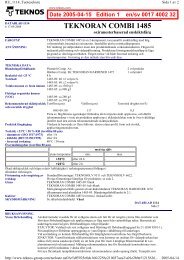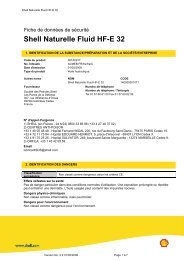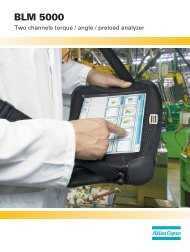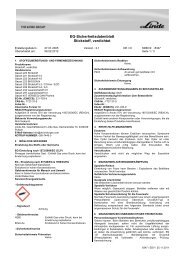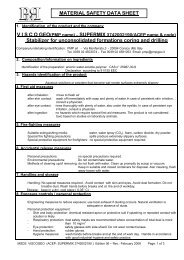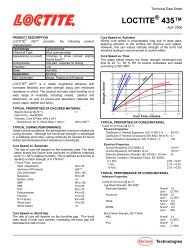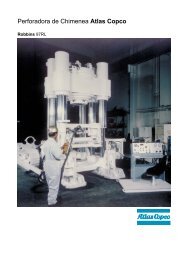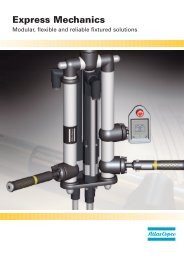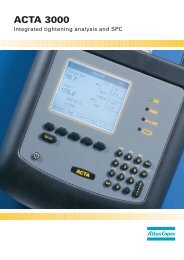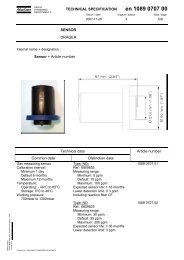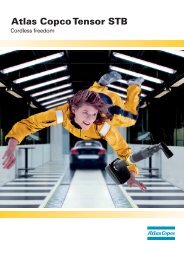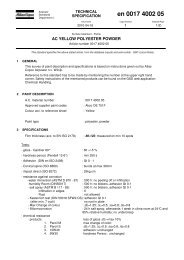Ergonomics - Atlas Copco
Ergonomics - Atlas Copco
Ergonomics - Atlas Copco
You also want an ePaper? Increase the reach of your titles
YUMPU automatically turns print PDFs into web optimized ePapers that Google loves.
EXTERNAL LOAD<br />
For evaluation purposes, it is assumed that<br />
the tool is being used for riveting in the<br />
aircraft industry. The tool is mainly used on<br />
vertical surfaces and the height is adjusted<br />
to allow a comfortable posture for pushing<br />
the tool horizontally. The tool is used by a<br />
male operator. The damping system starts<br />
attenuating vibration at a feed force of<br />
50 N. A feed force of up to 220 N can then be<br />
applied before bottoming occurs. The opera-<br />
tor applies sufficient feed force to prevent<br />
the head of the rivet from jumping out of the<br />
countersinking and spoiling the panel.<br />
The bucking bar has built-in vibration<br />
isolation, and the spring is designed to<br />
give a force of 100 N at the foot of the rivet<br />
when in use. Thus the operator must apply<br />
greater force. A trained operator applies an<br />
average force of 125 N during the riveting<br />
process.<br />
When the tool is used with a high grip<br />
no torque is required to operate it. When<br />
Table 4.8 Evaluation of external load for the Riveting Hammer RRH 06.<br />
the index finger is used for triggering,<br />
together with a low grip, an ulnar flex-<br />
ion torque is required. This torque can be<br />
estimated as the vertical distance from the<br />
middle of the handle to the center of the<br />
tool, times the push force. In this case the<br />
distance is 70 mm and the ulnar flexion<br />
torque can be calculated as follows:<br />
Ulnar flexion torque.<br />
= 125 N • 0.07 m = 8.75 Nm<br />
When the tool is taken from the tool rest<br />
to the rivet, or moved between rivets, the<br />
weight of the tool is supported by the hand<br />
holding the trigger handle. In this case a<br />
radial flexion torque must be applied that<br />
equals the horizontal distance from the mid-<br />
dle of the handle to the center of gravity,<br />
times the weight of the tool, times gravity.<br />
Radial flexion torque<br />
= 0.1 • 1.3 • 9.81 = 1.3 Nm<br />
Force/Torque MVC Safety factors Reduced Real load Real / Score<br />
N/Nm Speed Frequency Duration MVC N/Nm Reduced<br />
Trigger 130 N a1=1 a2=1 a3=1 130 N 16 N 0.12 1<br />
Push forward<br />
straight arm 450 N 450 N 125 N 0.28 2.5<br />
Ulnar fl exion 15 Nm 15 Nm 8.75 Nm 0.58 5<br />
Radial fl exion 15 Nm 15 Nm 1.3 Nm 0.09 1<br />
Total score: 9.5<br />
147



